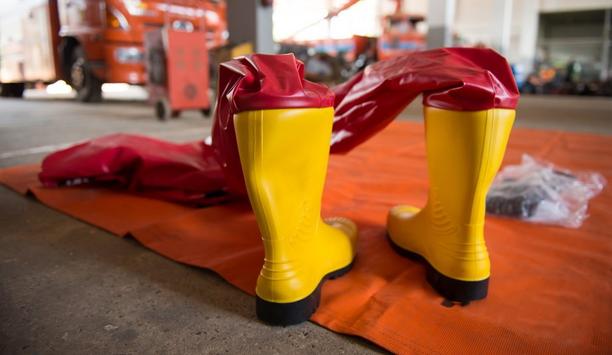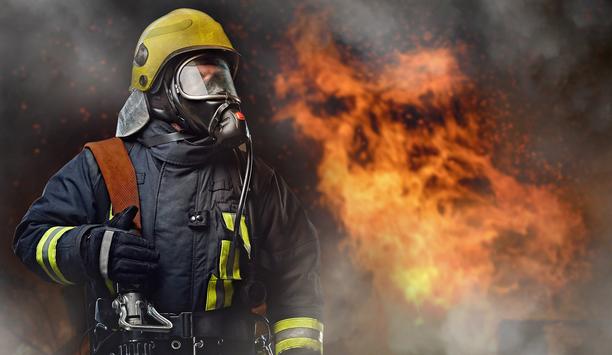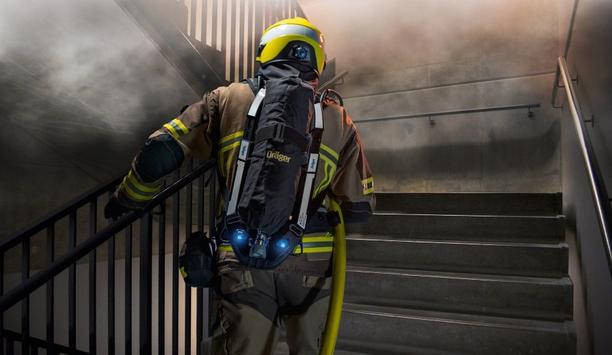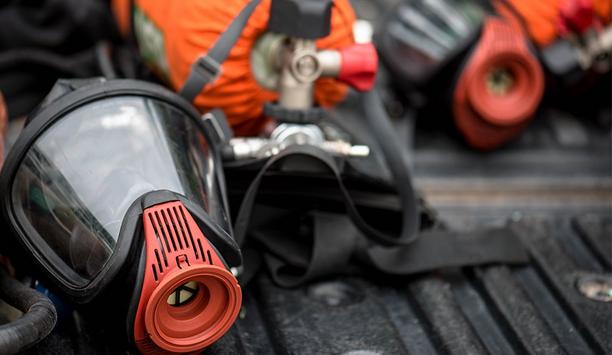Dry fire sprinkler systems have been around for a long time and are used to protect unheated warehouses and structures, where freezing temperatures could cause the pipes in a wet pipe sprinkler system to burst. They are also increasingly being used in areas containing sensitive or very expensive contents due to the fears that leaking fire sprinkler pipes could cause.
As the use of dry pipe systems has become more widespread, concerns regarding the impact of corrosion common in dry pipe systems have led to an increase in the use of nitrogen instead of compressed air to keep the pipes pressurized.
Positives of nitrogen-based dry sprinkler systems
The benefits of nitrogen generators in dry fire sprinkler systems are well documented
Many owners of dry sprinkler systems remain on the fence, when it comes to investing in nitrogen-based systems, mostly due to perceived higher costs. However, the benefits of nitrogen generators in dry fire sprinkler systems are well documented and they may cost far less than the common perception.
To help users decide if nitrogen generators are a good investment for their business, this post will provide an introduction into the problem of corrosion in dry pipe systems and how the use of nitrogen can address that problem. Listed also are the benefits that nitrogen generators can provide users in the long run.
Problems with using compressed air in sprinkler systems
In dry fire sprinkler systems, pipes are pressurized with air, which holds the valve separating the main piping from the water supply closed. In a fire, the heat activates the sprinkler head causing the air pressure in the pipes to drop. This, in turn, causes the valve to open and release the water into the pipes, where it flows out of the activated sprinkler head.
The problem with using compressed air as the pressurized gas is that it is very reactive. And, when it reacts with metals like the steel used in most sprinkler system piping, oxidation occurs, which can lead to corrosion. In sprinkler pipes, this corrosion can cause the pipes to rust, weakening them and creating holes as small as a pin-head and as large as a nickel (in extreme cases, this can lead to burst pipes).
Avoiding wear and tear on the air compressor
The holes caused by ongoing corrosion also add wear and tear on the air compressor because the holes in the pipes cause drops in pressure. Over time, as the corrosion problem becomes more severe, it will overwhelm the compressor’s ability to keep adequate pressure in the system.
And, then it happens, the pressure will drop far enough to cause the dry pipe valve to open, releasing water into the pipes as if there was a fire and resulting in significant water damage to the area that they were meant to protect in the first place.
One of the reasons corrosion is such a problem in dry fire sprinkler systems is that the pipes are never completely dry. There is always some amount of water trapped inside them after annual trip testing and there is always some amount of humidity in the air that is pumped into them through the air compressor.
Nitrogen, the perfect solution to corrosion
Once considered innovative, the use of nitrogen in dry sprinkler systems has increased significantly in the last decade
Once considered innovative, the use of nitrogen in dry sprinkler systems has increased significantly in the last decade. In nitrogen-based dry sprinkler systems, almost all of the air in the pipes is replaced with 98 percent or more of nitrogen gas.
Because nitrogen is a stable inert gas, it does not react with the metal pipe. With a dew point of -58 degrees, any moisture remaining in the pipes after annual trip testing cannot condense. And, by eliminating virtually all the compressed air within the pipes, corrosion can no longer occur.
By volume, the air contains about 78 percent nitrogen and 21 percent oxygen. The remaining one percent contains very small amounts of other gases, such as carbon dioxide. Nitrogen generators work by pulling the nitrogen from the air with an air compressor. As the air is pulled into the generator, it passes through a membrane that separates the nitrogen from the oxygen and other gases so that only pure nitrogen is captured and fed into the system.
Nitrogen delivered via tanks, generators
The nitrogen necessary for this type of sprinkler system can be delivered via tanks or through the use of a generator that produces the nitrogen on-site. Nitrogen generators are almost always the preferred option due to the costs associated with the ongoing delivery of high-pressure nitrogen tanks and the space required to store them safely.
While the cost of a nitrogen generator is significantly higher than that of a standard air compressor, there are other factors besides price that must be considered in order to make an informed decision, about the value of such an investment.
Low maintenance and repair costs
Because nitrogen-based systems eliminate the corrosion that causes pipes to leak or burst, the pipes in existing systems will require far fewer maintenance calls for repair or replacement. New systems will require few if any calls to address issues related to corrosion. Considering the cost of a single maintenance call, it’s easy to quantify the cost benefits here.
Nitrogen generators require very little ongoing maintenance, most of which are simple enough to allow building owners or property maintenance technicians to do it themselves. The main monitoring requirement with nitrogen-based systems is to ensure the purity of the nitrogen gas is maintained.
Continuous checks via monitoring technology
Annual maintenance usually requires just changing the filters that clean the air, before it enters the generator unit
This can be easily accomplished with monitoring technology, which can perform continuous checks to ensure that the nitrogen in the system meets the 98 percent or greater purity requirement at all times. Manual systems will require weekly checks.
Annual maintenance usually requires just changing the filters that clean the air, before it enters the generator unit. There is also the regular generator maintenance that users would expect for any dry pipe system, such as checking the filter, belts, and oil. The valves and electronic components that control the process require very little routine maintenance.
High Life Expectancy
Corrosion and pipe damage begins the moment that a compressed air system is installed and continues throughout its use, which eventually results in the system’s failure. How long this will take depends on several factors. However, based on the results of a 20-year survey of corrosion in sprinkler systems, presented at a 2015 National Fire Protection Association (NFPA) symposium, the typical, compressed air dry fire sprinkler system will last for anywhere between 10 to 15 years.
And, 73 percent of them will have significant corrosion issues after only 12.5 years. Studies have shown that nitrogen-based systems can extend the life expectancy of sprinkler system piping by as much as five times. Given this, the investment in a nitrogen-based system can be spread over a much longer time.
Nitrogen generation systems with galvanized pipe
When considering these benefits, the higher cost of nitrogen generators may be well justified based on the current state of the sprinkler system. Nitrogen generation systems can work with galvanized pipe, which is the type most commonly used in sprinkler systems. So, if the corrosion in the system’s pipe is not yet severe, users may be able to upgrade their system without having to replace all of the piping.
For new systems or those that are severely degraded, black steel pipe is the preferred choice both in terms of its cost and performance. While there is no hydraulic advantage to using black steel instead of galvanized steel, there is a cost advantage. In a comparison of two dry sprinkler systems, one constructed of galvanized steel and a regular air compressor and the other made of black steel and a nitrogen generator, the total cost of the nitrogen system was six percent less.
While the cost of the nitrogen generator was significantly higher than that of the air compressor equipment, the difference was more than offset by the lower cost of the black steel, as compared to galvanized piping. These results, combined with a more than five-fold increase in the average life expectancy for a nitrogen system, make a compelling case for the benefits of switching to a nitrogen-based system.
Retrofitting a nitrogen generator
Retrofitting a nitrogen generator is a good option for newer systems that do not have significant corrosion damage
Retrofitting a nitrogen generator is a good option for newer systems that do not have significant corrosion damage. It is important to note that while switching to a nitrogen-based fire sprinkler system can help prevent additional corrosion that is occurring in one's pipes, doing so cannot reverse corrosion damage that has already occurred.
Depending on the current state of the pipes, users may find that the cost of maintenance is not yet so great as to warrant the expense of switching to a nitrogen-based system. One thing is certain, with the continued corrosion of one's pipes, the repair costs will begin to mount, and eventually, when coupled with the increased risk of water damage, will make nitrogen systems the most cost-effective way to protect one's business.
Of course, for users looking at a new installation, using a nitrogen-based system from the start will pay for itself with significantly reduced costs for repairs and maintenance, combined with a much longer life expectancy.
FM 1035 Standard for Nitrogen Generators
While the use of nitrogen generators for dry fire sprinkler systems is becoming much more widespread, not all contractors are trained in this technology. (The FM 1035 Standard for Nitrogen Generators, which provides the design and performance requirements for nitrogen generators, was approved only about five years ago.)
Koorsen Fire & Security stays on top of all new technologies in the fire safety industry. They offer highly trained and certified technicians with expertise in all types of fire sprinkler systems, including nitrogen-based dry sprinklers.






